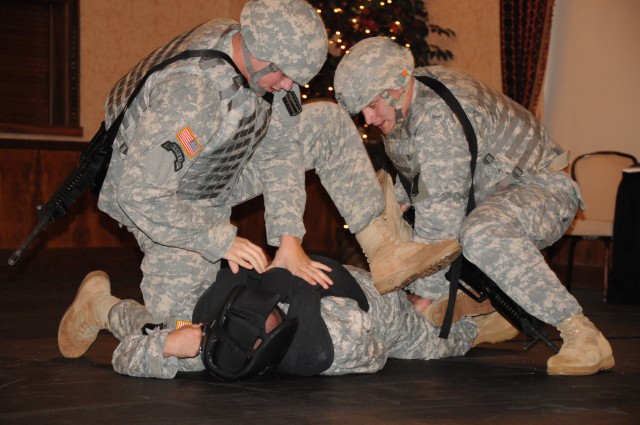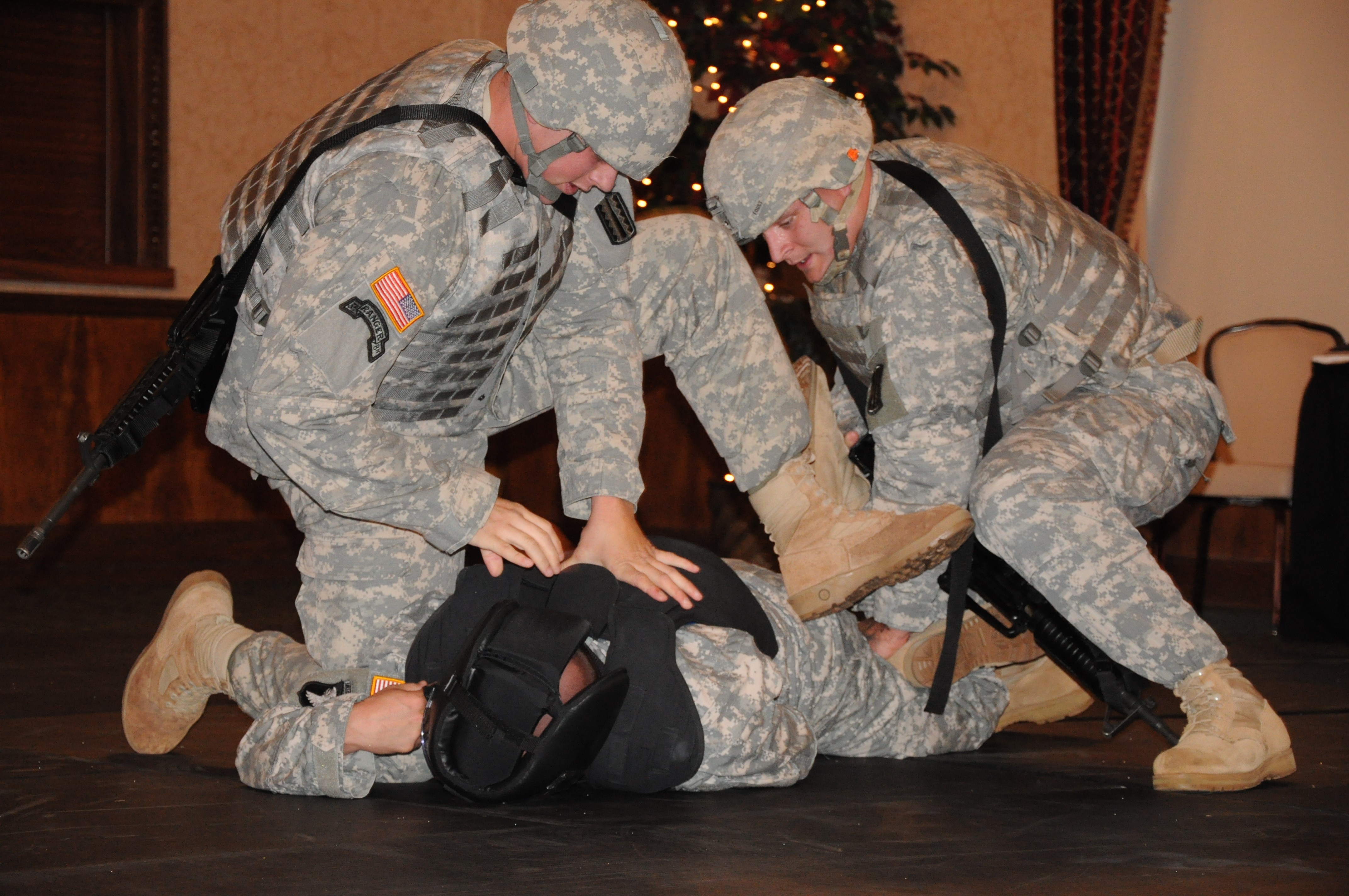FORT JACKSON, SC -- More than eight years of war have taken a toll on the Army - not only on the Soldiers fighting in combat, but also on the way new Soldiers learn their trade in Basic Combat Training.
"We're at war. And you learn things every day. And so we kept adding tasks (to BCT)," said Gen. George W. Casey, Army chief of staff, during a visit to Fort Jackson Monday. "We just got to the point where we had added so much, we needed to go back and see if we were duplicating things and whether we were focusing enough time on really important things."
In an effort to streamline the training and renew the focus on teaching essential skills, the program of instruction for BCT has undergone a holistic review and revision, said Lt. Gen. Mark Hertling, TRADOC's deputy commanding general for Initial Military Training.
"(People) tend to forget that what we're training is basic soldiering skills," said Hertling, who briefed Casey on the new POI during his visit here. "So we really had to do an analysis of what we were training, take a look at not only the relevancy of combat, but the young men and women who are coming in the service today - what (skills) they have, what they don't have, what we need to train them on."
The result is a lesson plan that reduces the number of warrior tasks from 32 to 15 and the number of battle drills from 12 to four. The subtasks taught have been reduced from 207 to 76. The new POI was approved by the Army's Training Operations Management Activity in March and is scheduled to be implemented by July.
Casey said he was pleased with the new training plan.
"I was very comfortable with what I saw ... and I think we're going very much in the right direction," Casey said. "We're in the middle of a war and we're committed to making sure that our Soldiers have the skills they need to succeed in the war. What we're moving toward is a strategy that trains a few important tasks very well - things like marksmanship, things like combatives and things like physical fitness."
Among the main changes are an increased focus on rifle marksmanship and combatives training. The revised rifle marksmanship strategy calls for an additional 30 hours of training, a large chunk of which will be spent on advanced techniques, such as reflexive night firing and barrier shooting. The new combatives lesson doubles the training to 22 hours and adds techniques that include the use of weapons in hand-to-hand fighting.
"It's no longer just a grappling around on the ground, it's actually using the lessons of combat in terms of how we fight and how we use our weapons, how we use our hands, how we use our knives," Hertling said.
New Soldiers will also receive cultural training, which aims to familiarize them with both the Army culture and cultures they might encounter during deployments or overseas assignments, Hertling said.
Other training revisions are improved instruction of the Army Values, the addition of resiliency training and changes to physical training.
"We've got a more scientific and rigorous and precise approach to how we're doing (physical training), so we're increasing the physical fitness levels and decreasing the injuries," Hertling said.
Another key element to the new POI is eliminating drills and tasks that are not deemed essential.
Among the deletions are .50 caliber
M-2 machine gun training, pugil stick and bayonet training and landmine defense training.
Hertling said that Fort Jackson organizations have played a huge role in developing the new POI. The Directorate of Basic Combat Training was tasked with rewriting the lesson plans and preparing abbreviated lesson plans that drill sergeants can refer to quickly rather than sifting through the entire manual, Hertling said.
He added that the Drill Sergeant School plays an important part in more ways than just training future drill sergeants and familiarizing them with the POI.
"The correct training of these drill sergeants is not only linked to better training of the trainees, but is producing noncommissioned officers who really know the skills backward and forward," he said. "So when they come in from the operational force and learn to be drill sergeants to train those young Soldiers, they're polishing their skills as well. The drill sergeants who leave here are better NCOs when they go back to the force."


Social Sharing